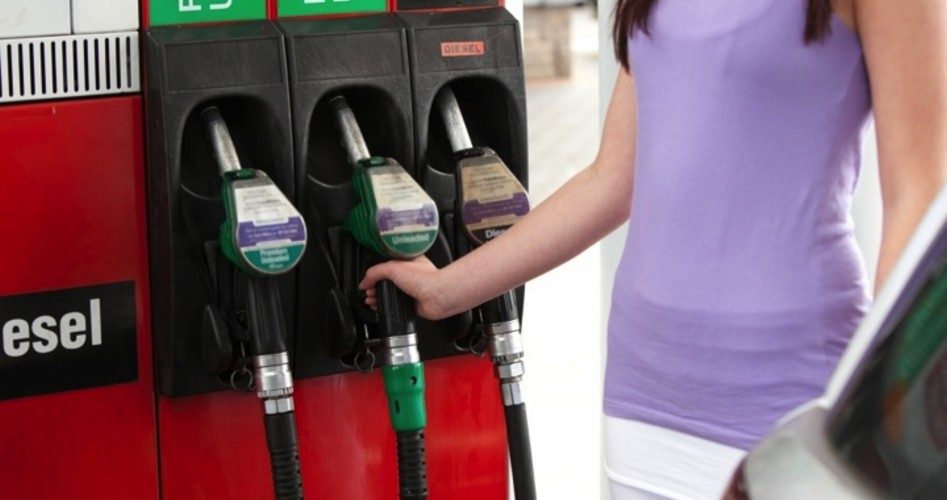
With gasoline prices averaging, according to the AAA Motor Club, just $3.43 a gallon as of August 28, Clifford Krauss celebrated the “new American oil bonanza” in an article for the New York Times. Unfortunately, Krause is behind the times and only half right. The “new” American oil bonanza is not new, nor is it confined to oil. The first economical natural gas shale fracture was completed in 1998 by George Mitchell’s company, Mitchell Energy, using slick water fracturing. Since then, natural gas from shale has been the fastest growing contributor to total primary energy in the United States, with crude oil extraction from shale right behind.
Happily, Krause got the rest of it right when he noted that these are the lowest gasoline prices of any Labor Day weekend since 2010 and, without the development of fracking and horizontal drilling, gasoline prices would probably be twice what they currently are.
The combined oil production of the three largest oil fields in the United States — Bakken, Eagle Ford, and Permian Basin — is nearly 4.5 million barrels per day, up from just one million barrels per day as recently as 2008. In July of that year, the average price per gallon of regular gasoline in the United States was $4.11.
So, with all of that increased production, why haven’t gasoline prices dropped even further?
{modulepos inner_text_ad}
Part of the answer is the turmoil in the Middle East, which has removed from world supply an estimated 2.8 million barrels a day. Part of the answer is the enormous increase in demand for energy across the planet. According to the Energy Information Agency and the U.S. Department of Agriculture, the world’s gross domestic product (GDP) has increased by more than 24 percent in just the last 10 years, while energy supply has increased less than five percent in that same period. Put simply, the enormous increases in energy supply in the United States have not been enough to keep up with the world’s demand for energy.
And then there are federal and state excise taxes. On the federal level they add 18.4 cents to each gallon of gas, while on the state level they add between 30 and 70 cents per gallon, depending on the state. For example, Alaska’s gasoline tax is 30.8 cents per gallon while California’s is 71.3 cents. The cheapest places to buy gas in the United States are in the southeast states of South Carolina, Mississippi, Virginia, Louisiana, and Alabama, where gas is less than $3.20 a gallon. On the other end of the scale, in Alaska gas is $4 a gallon, while gas in Hawaii is more than $4.28 a gallon.
Perhaps a better question to ask is: Why aren’t American motorists paying more for gasoline than they are? After all, in Switzerland citizens pay $7.29 a gallon while drivers in France pay $7.52 a gallon, and drivers in Germany pay $7.72 a gallon. In the United Kingdom, motorists pay $8.09 a gallon, while Italian drivers pay an astonishing $9.12 a gallon. The answer to that question is simple: Despite paying an average of almost 50 cents in federal and state excise taxes per gallon of gas, American drivers are enjoying the benefits of a free market that allowed the development of a technology to access oil and natural gas reserves 10,000 feet below ground that would have otherwise remained locked up. It was the combination of private capital, private property, the rules of law and contracts, and economic incentive that caused George Mitchell to invest the last years of his life and almost all of his money in developing the technology that drivers are enjoying today. “If it weren’t for that,” said Scott Sheffield, chief executive of Pioneer Natural Resources, one of the most aggressive producers in the Eagle Ford Shale development in Texas, “we would be seeing $200 a barrel oil or higher and $7 to $8 gasoline prices.”
Drivers pulling out of their driveway and heading off to enjoy the Labor Day weekend are, without knowing it, enjoying the fruits of private American enterprise, which has not only made their trip possible, but affordable as well.
A graduate of Cornell University and a former investment advisor, Bob is a regular contributor to The New American magazine and blogs frequently at www.LightFromTheRight.com, primarily on economics and politics. He can be reached at [email protected].



